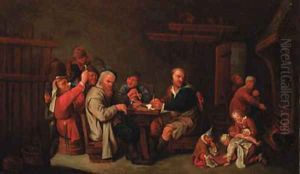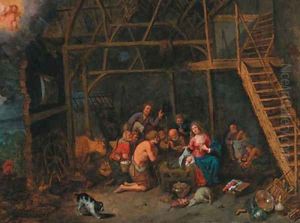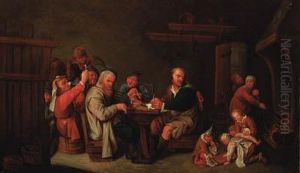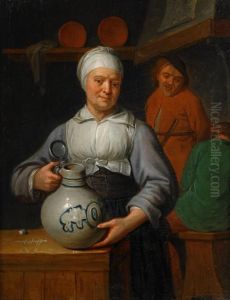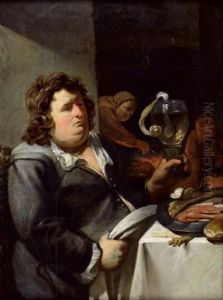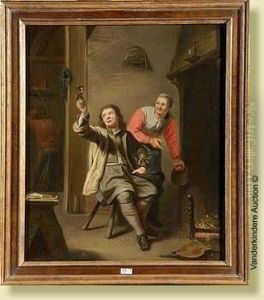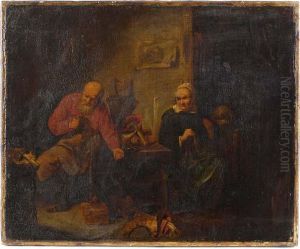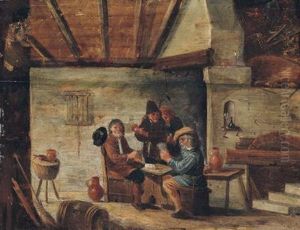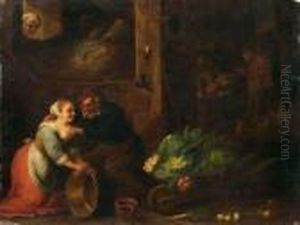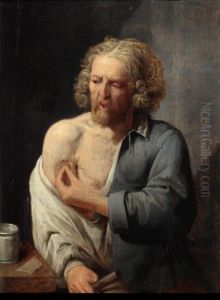David Ryckaert Paintings
David Ryckaert III was a notable Flemish painter born into a family of artists in Antwerp, 1612. His grandfather, David Ryckaert I, and father, David Ryckaert II, were both painters, establishing a strong artistic lineage that David III would continue. His family's connections and the artistic environment of Antwerp played significant roles in his development as an artist.
Ryckaert's early training was under the guidance of his father. He became a master in the Antwerp Guild of St. Luke in 1636, indicating his acceptance and recognition within the local artistic community. Unlike many of his contemporaries who traveled to Italy to study classical and Renaissance masters, Ryckaert's entire career was based in his native city. This did not, however, limit his exposure to the broader European art scene, as Antwerp was a vibrant artistic center attracting talents from across the continent.
David Ryckaert III was versatile in his subject matter, producing a wide range of works including genre scenes, landscapes, and religious paintings. He is particularly remembered for his genre scenes, which often depicted peasants and their daily lives, imbued with a sense of humor and attention to detail. These works reflect the influence of Adriaen Brouwer and David Teniers the Younger, artists known for their detailed and lively depictions of peasant life.
Ryckaert's style evolved over his career, initially influenced by the aforementioned artists, he developed a unique approach that blended realism with a sense of warmth and humanity. His paintings are characterized by their detailed execution, vibrant colors, and the often subtle incorporation of moral or allegorical messages.
Despite his success, David Ryckaert III did not achieve the lasting fame of some of his contemporaries. Nevertheless, his contributions to Flemish painting are significant, providing insight into the social and cultural life of 17th-century Flanders. Ryckaert died in Antwerp in 1661, leaving behind a rich legacy of works that continue to be studied and appreciated for their artistic and historical value.
